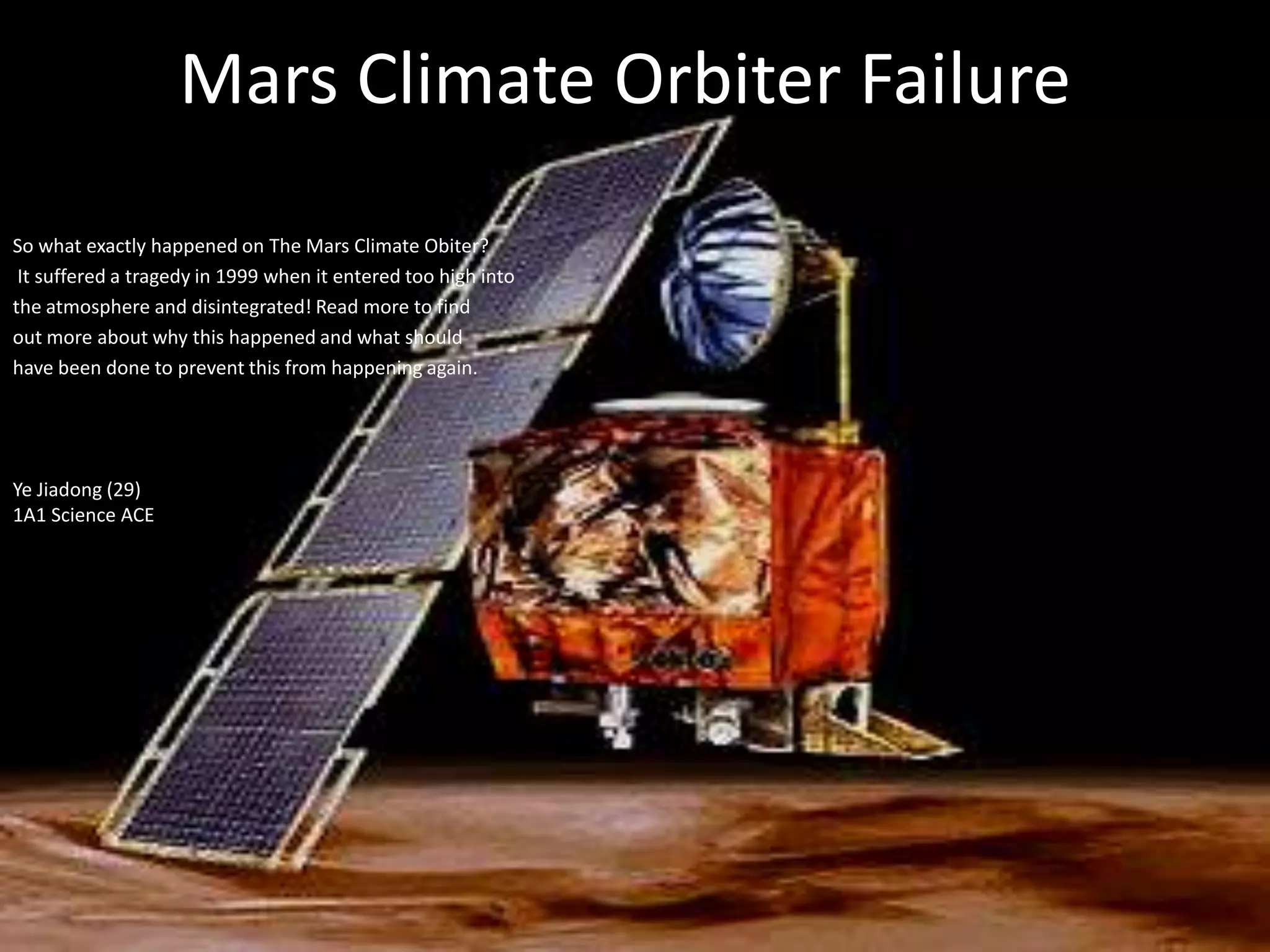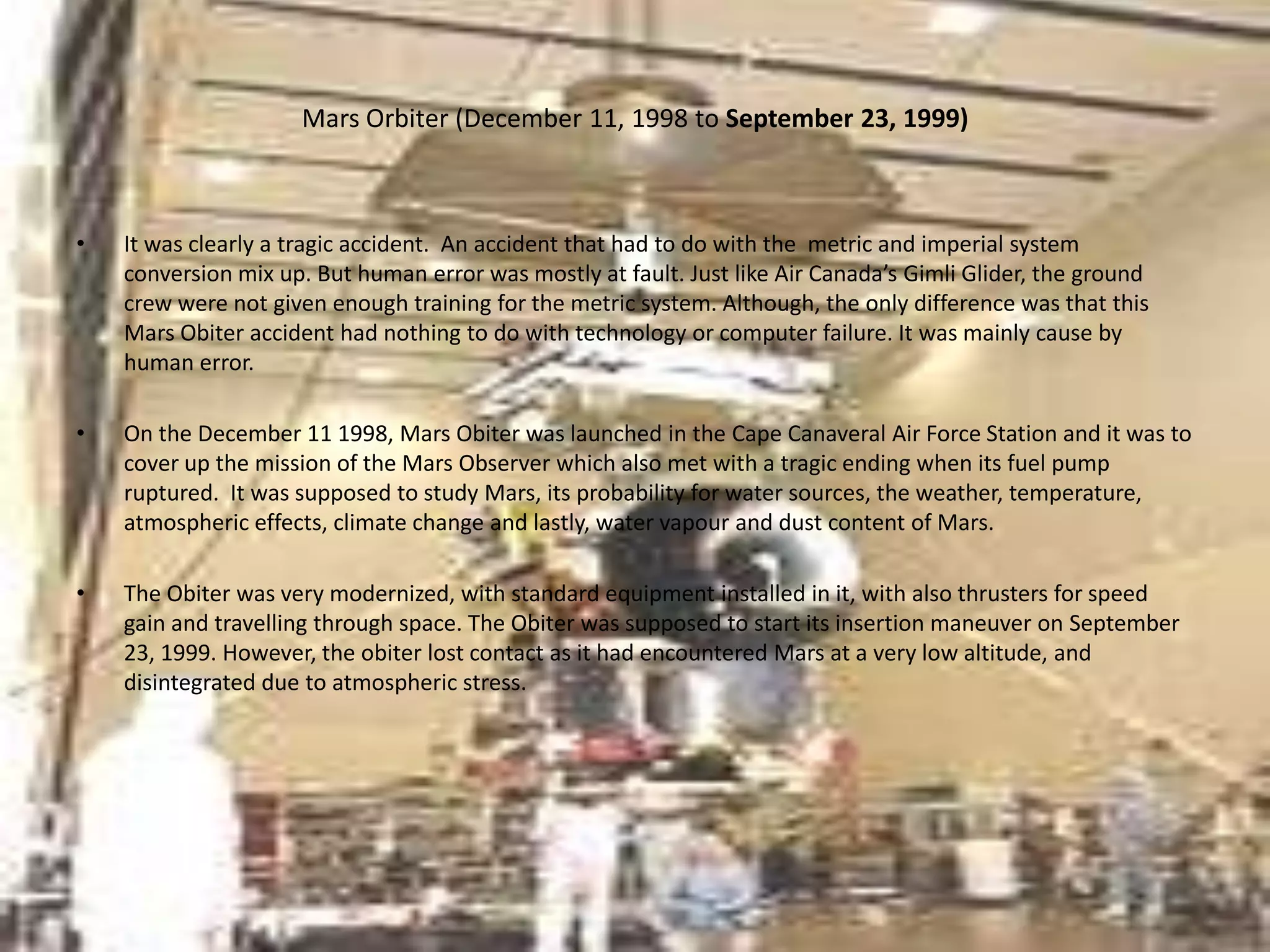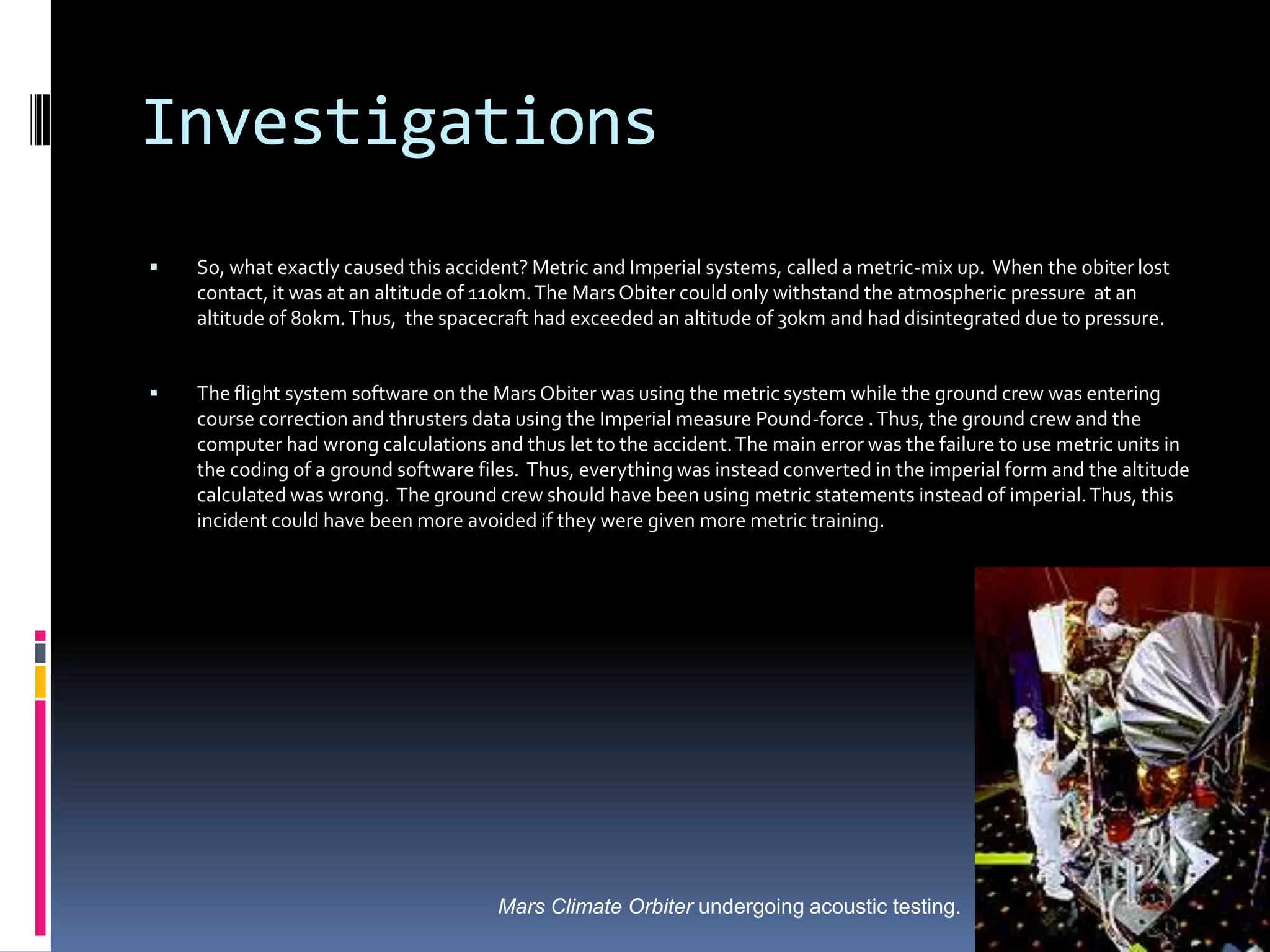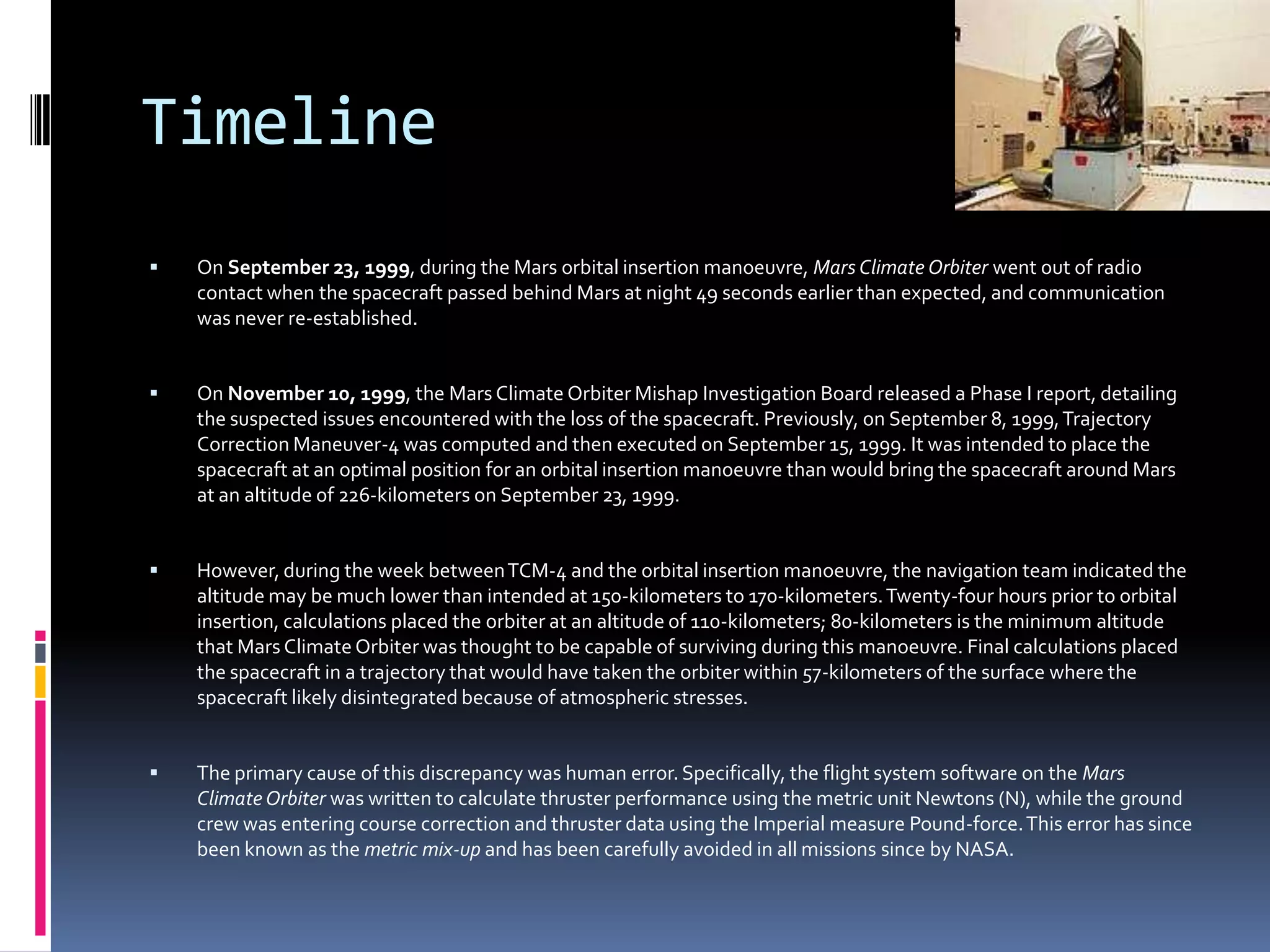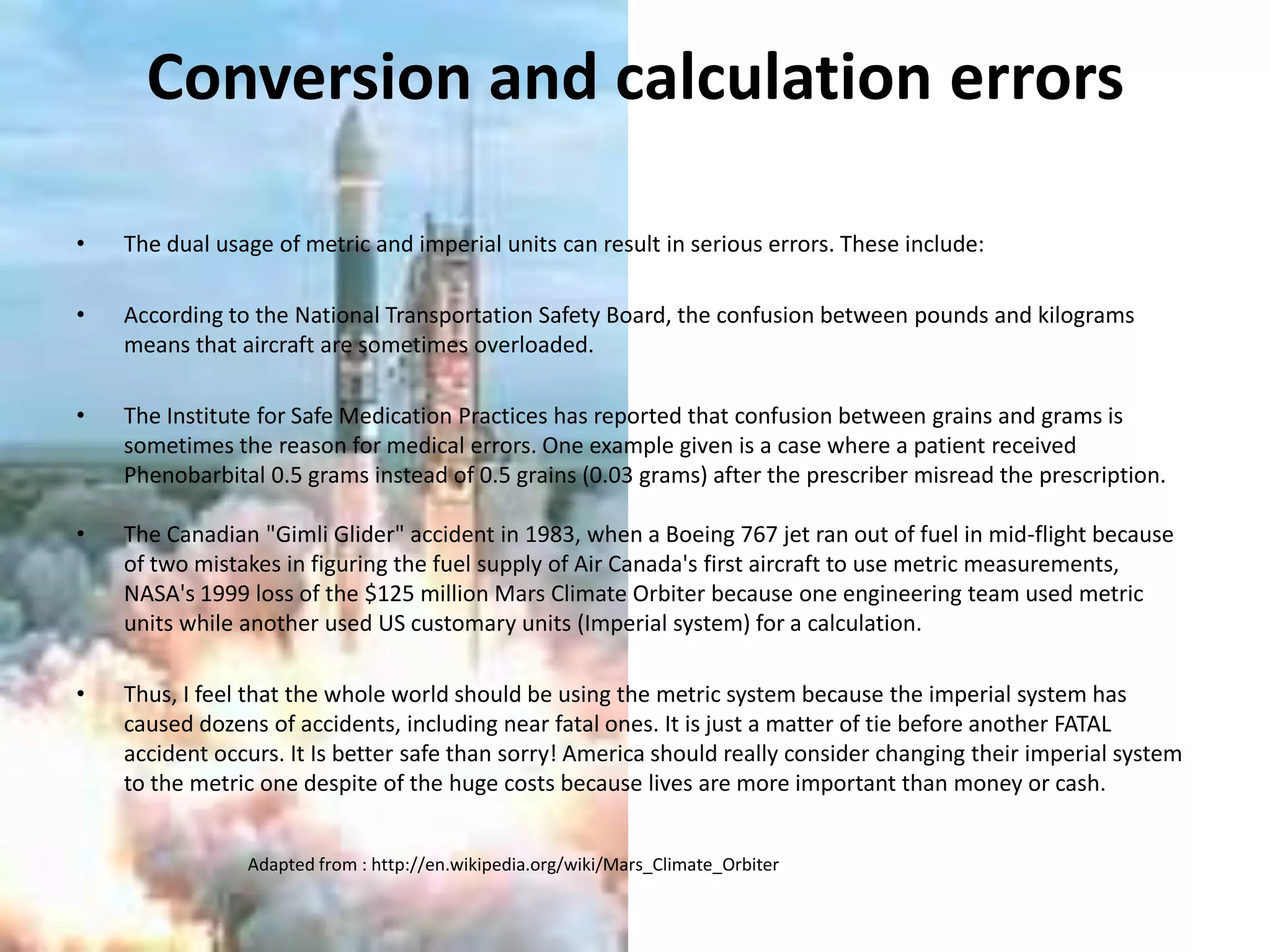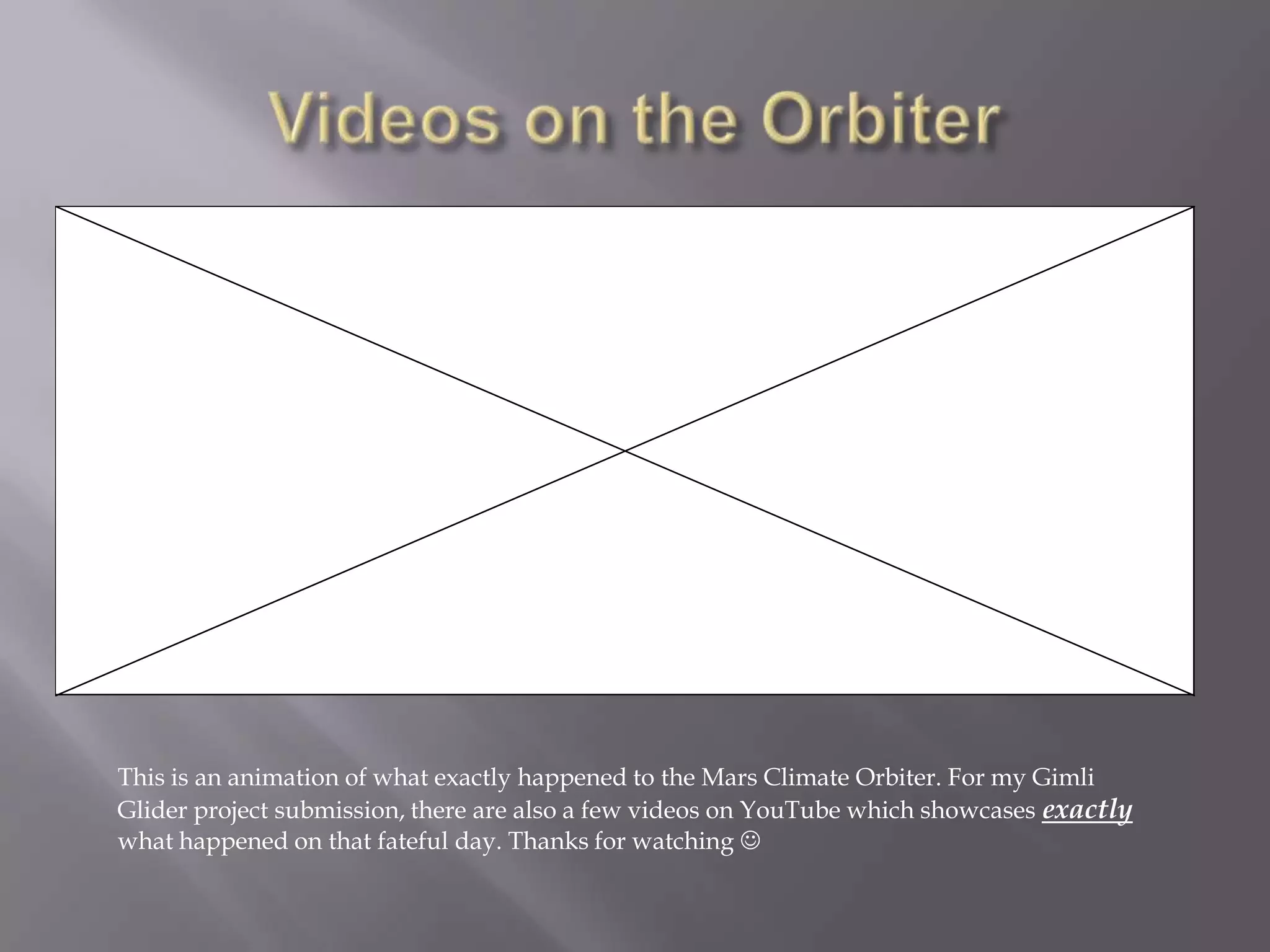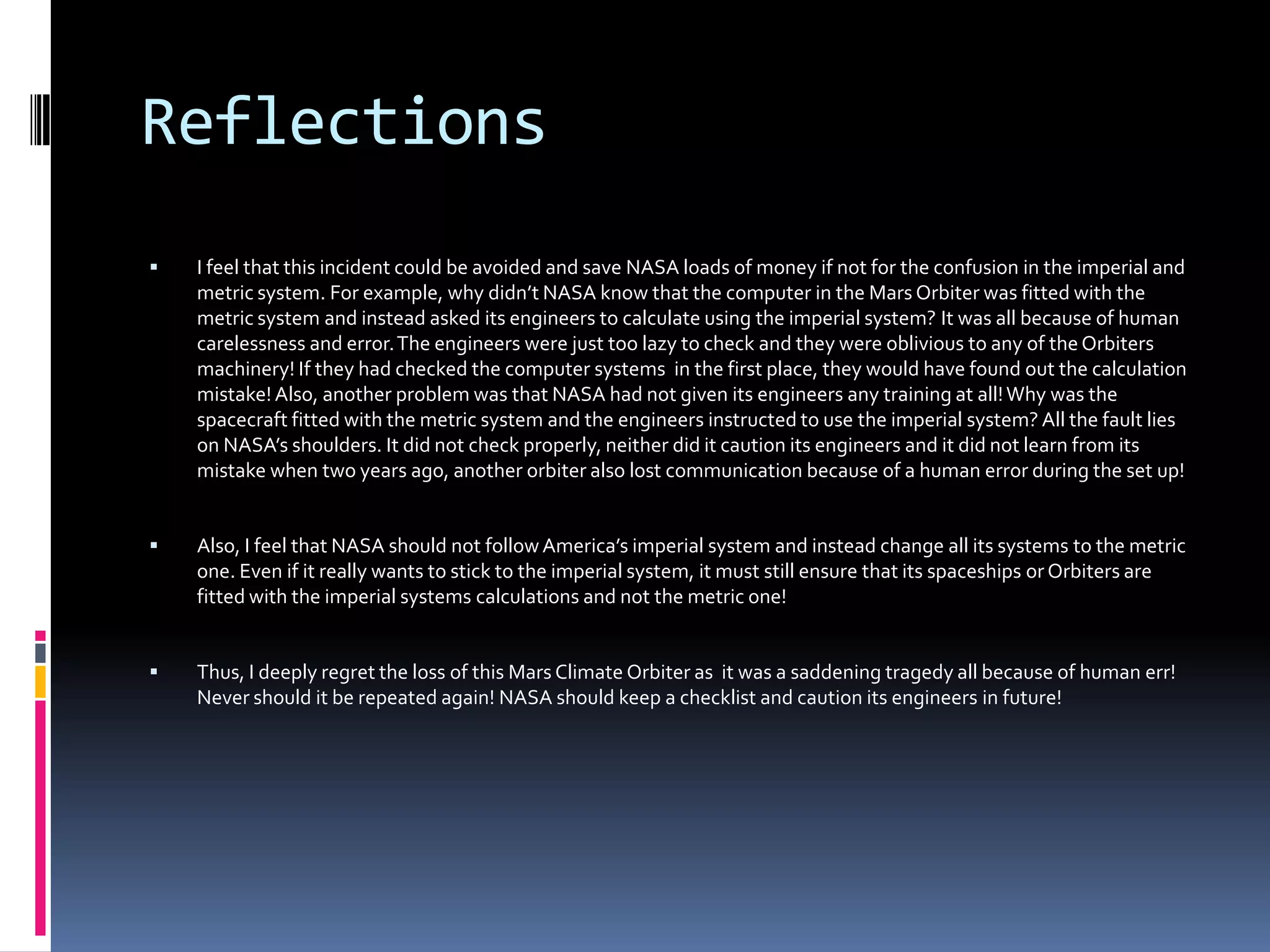The Mars Climate Orbiter failed due to a metric-imperial unit conversion error. The spacecraft's software used metric units while ground teams entered data using imperial units, resulting in incorrect calculations that sent the orbiter too low into Mars' atmosphere, where it disintegrated. The failure was caused by human error in not ensuring consistent use of units across software and teams. It underscores the importance of strict protocols and training to prevent mistakes when using different measurement systems.
